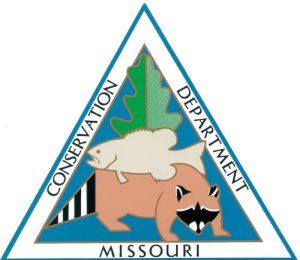AgEBB-MU CAFNR Extension
Green Horizons
Volume 25, Number 2
Spring 2021
MDC Reorganization
George Kipp, Private Land Forestry Program Supervisor, Missouri Department of Conservation

"Why change?" was one of the first questions posed by Missouri Department of Conservation Director Sarah Parker Pauley during the rollout of the new organizational structure to staff in early 2020. This, however, is not a mere rhetorical question. The world is changing at an increasingly fast pace. Challenges in natural resources management such as a feral hog invasion, severely declining bird populations, Chronic Wasting Disease in deer, and Rapid White Oak Mortality have strained the Conservation Department's workload and forced a hard look at how to address these and future challenges. The new organization model gives the Department the flexibility to deploy staff quickly and efficiently to high priority challenges, as well as the meeting the demands of daily operations.
The new organization structure is centered around delivering on MDC's core functions: MDC takes care of nature, MDC connects people with nature, and MDC maintains public trust. This also empowers the eight geographic regions to deploy staff and resources efficiently and effectively to address threats to nature and deliver on MDC's core programs. Other benefits of the new organization structure include unifying Department strategic priorities, integrating natural resource management across disciplines, centralizing standards, and enhancing the Department's focus on customer service and continuous improvement.
A deputy director is assigned to each of the core functions and those functions are further subdivided into branches and sections. The Deputy Director for Resource Management leads the core function of taking care of nature. This core function is further subdivided into five branches: Statewide Resource Management, Regional Resource Management, Protection, Science, and Community and Private Land Conservation. Statewide Resource Management is divided into sections that provide policy and planning input for the regions, as well as manage statewide programs and services.
Regional Resource Management is divided by the eight geographic regions of the Department, each represented by a Regional Administrator. The Regional Administrator manages staff to meet priority challenges and maintain Department core functions. Protection is responsible for enforcing the Wildlife Code and Science is responsible for coordinating and delivering scientific research to support Department operations. Community and Private Land Conservation provides planning and policy input to regional staff and programs that deliver services to communities and private landowners, as well as managing statewide programs and services.
The Deputy Director for Engagement leads the core function of connecting people with nature. This core function is also subdivided into 5 branches: Policy and Governmental Affairs, Education, Communication, Relevancy, and Legislative and Agriculture Liaison. The Deputy Director for Business leads the core function of maintaining public trust, which is subdivided into the different business and support sections that provide business, technological, and financial support for agency operations and services. This new organization structure, while a significant departure from the old, gives the Department greater flexibility to respond to current and future challenges.
